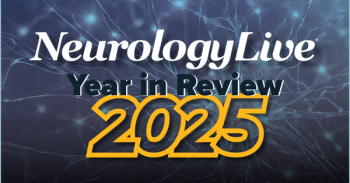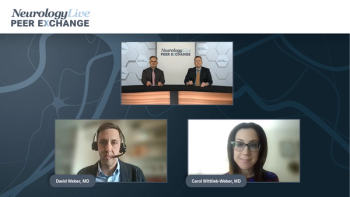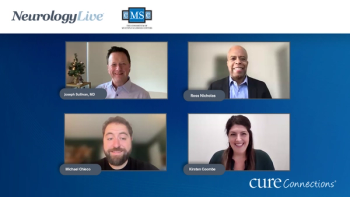
NeuroVoices: Stewart Tepper, MD, on Newly Approved Digital Therapeutic for Preventive Migraine
Key Takeaways
- CT-132, a first-in-class digital therapeutic for migraine prevention, was approved through the De Novo pathway based on rigorous trials.
- The app-based CT-132 complements existing migraine treatments, showing significant benefits without adverse events.
Renowned migraine specialist Stewart Tepper, MD, highlighted the groundbreaking FDA approval of CT-132, the first digital therapeutic for migraine prevention, and what it means for clinicians, patients, and future care models.
The emergence of digital therapeutics in neurology marks a transformative shift in how neurological conditions are managed. These evidence-based, software-driven treatments, often delivered through apps or devices, offer patients a new, non-invasive approach to managing conditions like migraine and many others. Earlier this month, the migraine community welcomed a new medication, Click Therapeutics’ CT-132, as the
Approved through the De Novo pathway, this app-based approach is intended to be used alongside acute and/or other preventive treatments for migraine. The medication’s approval was based on 2, double-blind, decentralized randomized trials: the phase 3 ReMMi-D trial (NCT05853900) and the ReMMiD-C bridging study (NCT06004388). Based on its indication, CT-132 is not designed to be used as a standalone therapy and does not replace or substitute other migraine treatments.1
To better understand the clinical implications of this approval, NeurologyLive® reached out to migraine specialist
NeurologyLive: What is the significance of this newly approved medication?
Stewart Tepper, MD: The big story here is that CT-132 is a first-in-class digital therapeutic, approved through the de novo pathway based on two rigorous, sham-controlled clinical trials.
What's remarkable is that CT-132 showed additional benefit on standard FDA migraine prevention endpoints, even when added to existing preventive treatments. It represents a major new option for treating migraine—not just for neurologists and headache specialists, but potentially for primary care providers as well.
What should clinicians understand about how to use and prescribe this app?
CT-132 functions as an app that requires a prescription from a healthcare provider. Patients then access the app and use it for five to ten minutes daily over 12 weeks.
In the trials, it was tested alongside both conventional non-specific preventives (like amitriptyline, propranolol, and topiramate) and migraine-specific anti-CGRP therapies. Over 600 patients were enrolled, and the trials were sham-controlled—meaning half of the participants used an app that provided no therapeutic intervention (what I call a “make-work” app).
The active CT-132 app combines psychotherapeutic and behavioral techniques with a bit of neuromodulation—and notably, no adverse events were observed. From a practical standpoint, a provider would tell a patient: "We can boost your preventive results by adding a simple, five-to-ten-minute daily app for three months," prescribe CT-132, and the patient would add it to their ongoing regimen. It’s an easy, low-risk addition for prevention.
How will the clinical community need to adjust to this new medication?
First, about 99.5% of neurologists and headache specialists are unfamiliar with digital therapeutics. So there’s an urgent need for education. I’m working with the American Headache Society and CME vendors to develop programs quickly.
We also need to get the pivotal trial papers published in reputable journals, which will aid in educating practitioners about both the quality of the studies and the practical aspects of using CT-132. In the meantime, clinicians can review the AAN abstracts where the pivotal data was presented. I expect that within 3–6 months, we’ll have much broader educational resources available.
Importantly, the clinical benefits—fewer monthly migraine days, improved migraine-specific quality of life, reduced disability, and better global patient-reported outcomes—were meaningful, even though patients were already on preventive treatment. All of these benefits made it into the FDA prescribing information.
Are there any ongoing studies of CT-132, or other future research directions to consider?
Currently, I’m not aware of any ongoing trials. The company's immediate focus is on launching and educating practitioners. That said, studying CT-132 in chronic migraine should be a clear next step. Chronic migraine remains a major unmet need, and extending research there makes perfect sense.
Fortunately, the company’s leadership, especially Dr. Shaheen Lakhan—an MD, PhD neurologist and former resident of mine—is exceptional. He understands both the therapeutic landscape and rigorous research standards. Given how well the CT-132 trials were designed and conducted, I’m confident there will be future studies and innovation with digital therapeutics in migraine.
Transcript edited for clarity.
REFERENCE
1. Click Therapeutics Announces FDA Marketing Authorization for CT-132, the First Prescription Digital Therapeutic for the Preventive Treatment of Episodic Migraine in the United States. News release. Click Therapeutics. April 15, 2025. Accessed April 29, 2025. https://www.biospace.com/press-releases/click-therapeutics-announces-fda-marketing-authorization-for-ct-132-the-first-prescription-digital-therapeutic-for-the-preventive-treatment-of-episodic-migraine-in-the-united-states
Newsletter
Keep your finger on the pulse of neurology—subscribe to NeurologyLive for expert interviews, new data, and breakthrough treatment updates.



















